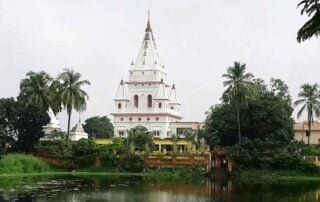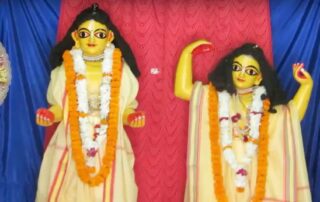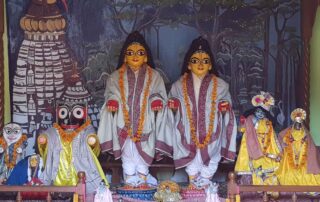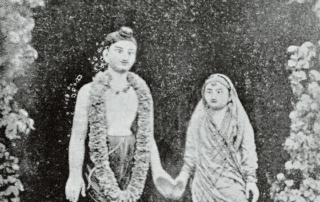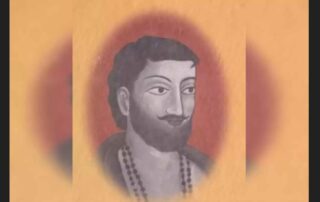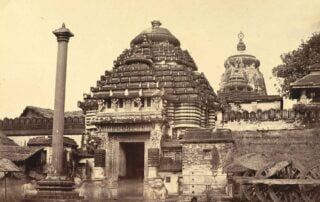Śrī Śrī Navadvīpa Dhāma
‘Śrī Śrī Navadvīpa Dhāma’ was first published in Śrī Viṣṇupriyā Patrikā, Vol.2 issue 5 in 1891. This article was written just after Bhaktivinoda Ṭhākura had published Śrī Navadvīpa Dhāma Māhātmya, and here, we find the Ṭhākura giving evidence for Māyāpura as the birthplace of Śrī Caitanya Mahāprabhu.
The Place of Śrī Nakula Brahmacārī (Śrī Nakula Brahmacārīra Pāṭa)
In this early article, Śrī Nakula Brahmacārīra Pāṭa (The Place of Śrī Nakula Brahmacārī) first published in Śrī Viṣṇupriyā Patrikā, Vol.2, issue 3 in 1890, Śrīla Bhaktivinoda Ṭhākura talks about his visit on April 9th 1890 to the holy place of Nakula Brahmacārī, the eternal associate of Mahāprabhu. Bhaktivinoda speaks out against the present situation there and explains how the renunciant Vaiṣṇavas must be free from association with women.
Śrīpāṭa Denuḍa
'Śrīpāṭa Denuḍa' is a rare article written by Śrīla Bhaktivinoda Ṭhākura which was published in Viṣṇupriyā Patrikā, Vol.2 issue 6 in 1890. The Ṭhākura describes a visit to the bhajana-sthālī of Śri Vṛndāvana Dāsa Ṭhākura in Śrīpāṭa Denuḍa, and sees the dilapidated condition of this holy place.
Śrīdhāma Māyāpura
In this short article ‘Śrīdhāma Māyāpura’ published in Sajjana Toṣaṇī Vol.5 issue 12 in 1893, Bhaktivinoda Ṭhākura gives evidence from Bhakti Ratnākara to prove that Māyāpura is the birthplace of Śrī Caitanya, and invites the people of Bengal to attend the annual Gaura Pūrṇīmā festival that year.
The Poet Rāma Prasāda (Kavi Rāma Prasāda)
Kavi Rāma Prasāda (The Poet Rāma Prasāda) was published in Sajjana Toṣaṇī, Vol.7, Issue 7 in 1895. Bhaktivinoda Ṭhākura talks about the famous Bengali Śākta poet, Rāma Prasāda, and notes how he performed sādhana at a place that was famous due to the presence of Gaura-Nityānanda.
The Temple of Śrī Śrī Jagannāthadeva (Śrī Śrī Jagannāthadevera Mandira)
In this brief article, 'Śrī Śrī Jagannāthadevera Mandira (The Temple of Śrī Śrī Jagannāthadeva)', published in Sajjana Toṣaṇi, Vol.4, Issue 2 in 1892, Śrīla Bhaktivinoda Thākura gives a short history of the temple of Jagannātha in Purī. He then goes on to explain the poor condition of the temple premises and requests the rich people of Bengal to generously donate towards the cause.
Bhakta Manovedanā (The Anguish of a Devotee)
In this short editorial, Bhakta Manovedanā (The Anguish of a Devotee) published in Sajjana Toṣaṇī, Vol.10, issue 7 in 1899. Bhaktivinoda Ṭhākura decries the killing of animals in Jagannātha Purī, especially monkeys, and laments the local governments decision to build a latrine next to the sacred temple of Lord Jagannātha.
The Temple of Jagannath at Puri
An English essay written in 1871 (The Temple of Jagannath at Puri) describes the history of the establishment of the great temple in Purī, Orissa. This piece also addresses the hypocrisy of temple priests as opposed to sincere devotional worship in pure love of God.

